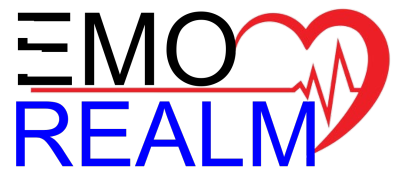![[Downloader.la]-68671d144fc1b](https://emorealm.xyz/wp-content/uploads/2025/07/Downloader.la-68671d144fc1b-678x381.jpg)
Introduction
Alopecia Areata happens when the body’s immune system attacks hair follicles, leading to patchy bald spots without warning. It doesn’t matter how old you are or if you’re male or female – anyone can get it. Around the world, millions deal with this issue, which often brings feelings of insecurity or sadness. Knowing more about it helps people going through hair loss – or helping someone who is – to feel less alone.
Hair falling out because of this issue might shake someone’s self-assurance or daily comfort. Since Alopecia Areata shows up in different ways, knowing what drives it helps people choose smarter routines or therapies. Getting what this condition feels like builds stronger connections and real backing for anyone dealing with it.
Causes and Symptoms
Alopecia Areata happens if the body’s defense system wrongly targets hair roots – those small parts where hair grows. Because of this attack, the roots get smaller and stop working normally. So, people start losing hair in spots, out of nowhere, different sizes each time.
Smooth, round patches without hair often show up on the head or elsewhere. In some cases, folks notice more hair falling out than usual – or their hair feels different. A mix of genes might play a role, while strong emotions could make things worse. Hormone changes along with outside factors may trigger it, sometimes making symptoms stronger.
Spotting these signs early matters – it helps people act fast, so they can get a doctor’s opinion while looking into options that might reduce or stop hair thinning.
Diagnosis and Medical Treatments
Doctors usually check for Alopecia Areata by looking closely at how and where hair is falling out. Sometimes, they take a tiny piece of skin from the head to make sure it’s not another issue causing the bald spots.
Doctors often try to calm down the body’s immune response so it stops harming hair roots, while also helping new growth kick in. These steroid creams or shots go right where needed to lower swelling fast. On top of that, some people get minoxidil because it wakes up sleepy follicles and thickens strands over time.
Though helpful, these treatments might cause issues like redness or shifts in skin color. Keeping a careful eye on things lets medical workers boost results while cutting down risks.
Self-Care and Management Strategies
Dealing with Alopecia Areata isn’t just about meds – taking care of yourself matters a lot too. Doing things that ease stress, such as meditating, stretching, or moving your body daily, might reduce the tough feelings tied to losing hair. Talking with loved ones or joining others who get it can bring relief and motivation.
Nutrition plays a role in keeping hair healthy. Eating well-rounded meals packed with key vitamins – including A, C, D, and E – alongside nutrients such as zinc or iron helps boost hair strength and keeps the scalp in good shape. Using light massage on your scalp with plant-based oils might increase circulation to hair roots, which could help encourage new growth.
Folks who use these full-body approaches tend to handle both mood swings and hair loss better. While some notice changes fast, others see slow progress – either way, it helps them stay steady through ups and downs. Trying different methods together builds stronger responses over time, instead of relying on just one fix.
Hair Growth Solutions by Hims
If you need extra help, Hims has stuff that’s easy to get and meant to keep your hair in good shape. Their range features shampoo, conditioner, serum, or even pills – each made with things that feed the scalp while boosting follicle strength.
These items usually mix vitamins, minerals, or herbal bits to support healthier hair growth. Using them every day might let people actively boost their scalp health while fighting symptoms of patchy hair loss.
Living with Alopecia Areata
Life with Alopecia Areata isn’t easy – yet plenty discover inner power by going through it. Telling real-life moments while linking up with people in the same boat brings comfort, sometimes even sparks motivation.
Support groups – online or face-to-face – give real chances to share tips, tools, or just talk through feelings. Focusing on liking yourself plus trying out new looks might keep your mood up while helping you feel good about who you are.
Keep in mind, losing hair doesn’t say anything about who you are. Taking time for yourself – while owning your one-of-a-kind vibe – builds real confidence and balance.
Conclusion
Even though Alopecia Areata is tough, knowing more about it while using full-care approaches really helps daily living get better. Medical options along with handling stress, eating well, or trying gentle hair products give people clearer paths through hair loss without feeling lost.
From daily habits to expert advice, plenty of options help people dealing with Alopecia Areata. Because they learn more and stay strong, handling it feels like gaining power instead of facing limits.
Additional Resources
Numerous orgs help people dealing with Alopecia Areata – each offering ways to link up, gain insight, or swap stories. Support circles exist so no one faces it alone.
Learning tools, new study findings, or advice from specialists help people grasp issues better and find useful solutions. Talking to doctors who focus on hair and skin conditions means getting care that fits your specific situation.
Using these tools builds a balanced network – helping with body, feelings, or knowledge – as you go through Alopecia Areata. One step at a time.

Be the first to comment